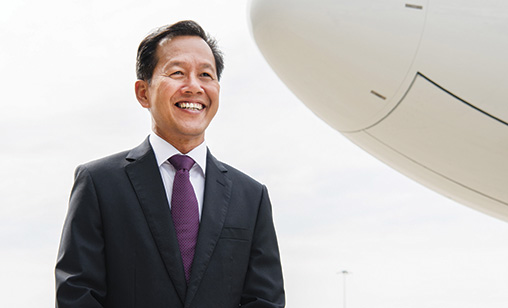Asia-Pacific Commercial Aviation Year in Review
Significant Asia-Pacific airline decisions of the year
December 1st 2019
Asia’s airline industry took some unexpected turns in 2019 and did so without much influence from governments or in reaction to external shocks. Read More »
A partnership, including a code-share, announced between Singapore Airlines (SIA) and Malaysia Airlines (MAS) in the final quarter of the year was one of the under-estimated achievements of 2019.
 |
Its significance is shaped to a degree by the history of Singapore, both country and airline, which separated from Malaysia several decades ago and has gone on to astonishing global economic and airline success.
But the partnership’s significance stands on its own in 2019 and in the years ahead as a value proposition. Under the terms of the tie-up, SIA receives more access to the market in Malaysia, effectively a home market for SIA. Gains will be in their own right and in a larger competitive environment.
If SIA did not carry the additional passengers, they would likely travel on the Gulf airlines which are expanding their presence in Malaysia. In return, MAS can boost revenue by selling long-haul SIA flights.
The partnership will shore up cash flow while the government deliberates the future of MAS. The Malaysian carrier could argue the SIA code-share, along with other partnerships such as the proposed joint-venture with Japan Airlines (JAL) could give MAS the option of a future independent of the investors the government is evaluating as MAS equity holders.
The Malaysian government’s decision to sell MAS is an exception to a year of relatively light government involvement in the region. Government activity in aviation is often considered to be interference to the detriment of the public and an open market, but the Malaysian government decision to sell MAS was for market-driven outcomes and public benefit.
An open market prevailed in Korea. Business licenses were issued to three start-up airlines in 2019. One successful candidate, Fly Gangwon, has commenced flights. Korea’s aviation authorities and the sector itself have argued against new airline entrants in Korea. They believe there is over-competition in a market served by two major airlines and six LCCs. But the country’s Fair Trade Commission favoured the benefits of competition when granting the business licences even if the decision could put some existing airlines out of business.
 |
Some strategic developments ruffled regulators. Air China (AC) and China Eastern Airlines (CEA) brokered a deal to swap Beijing slots so AC could have a small presence at new airport, Daxing, and CEA could keep its Shanghai flights at Beijing’s Capital Airport. Previously, China had an orderly plan for only AC to operate from the older airport.
In Hong Kong, Cathay Pacific Airways cemented its hold on Hong Kong with the acquisition of LCC, HK Express, from its financially stretched parent, ultimately the HNA Group. At press time, Hong Kong Airlines (HKA) was threatened with cessation of operations as it was reported to owe millions in airport landing charges and fees to Airport Authority Hong Kong that has forced the parking of seven of its planes. In late November, a consortium of Mainland banks cobbled together the funds to pay the airline’s staff salaries and operating expenses for the month.
Civil unrest in Hong Kong has had a huge impact on HKA, which relied largely on Mainland traffic feed from HNA Group carriers to fill its regional and international flights, a network that is shrinking by the month.
In Indonesia, the government’s orchestration of Garuda- Sriwijaya cooperation unwound. An independent Sriwijaya is too small to compete with Garuda and Lion Air, which have dominated the large domestic market after consolidation.
External shocks to the region’s industry included plummeting traffic between Japan and Korea after a political fallout and China forcing the resignation of the Cathay Pacific Airways leadership in August. Now in its seventh month of anti-government protests, the civil unrest has severely dented demand for all airlines in Hong Kong.